It’s Photomonth in East London and i’ll be running around the area this week to catch up with as many shows as possible. My two favourite exhibitions so far are as different from each other as it is possible to be.
The first one was at Amnesty International UK’s Human Rights Action Centre. It’s a rather small event, only 5 to 6 photos from each of the three shortlisted entries in the Photojournalism category at the Amnesty International Media Awards. The awards recognise excellence in human rights reporting and acknowledge journalism’s significant contribution to the UK public’s awareness and understanding of human rights issues. There’s a total of ten categories, including a student award, but this exhibition is dedicated to photojournalism.
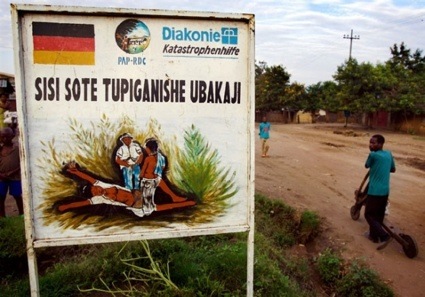 Ubakaji” is the Congolese word for rape. It is borrowed from the language of neighboring Tanzania; Congolese culture itself did not openly speak of rape until very recently (from Robin Hammond’s series Rape – A Weapon of War
Ubakaji” is the Congolese word for rape. It is borrowed from the language of neighboring Tanzania; Congolese culture itself did not openly speak of rape until very recently (from Robin Hammond’s series Rape – A Weapon of War
Robin Hammond‘s winning entry, This Girl, meets the women victim of rape and sexual violence in the Democratic Republic of Congo. Sexual violence has become part of modern warfare and The UN Security Council regards it as ‘a tactic of war to humiliate, dominate, instill fear in and forcibly relocate civilian members of a community or ethnic group.’
Each portrait is accompanied by the story of the woman:
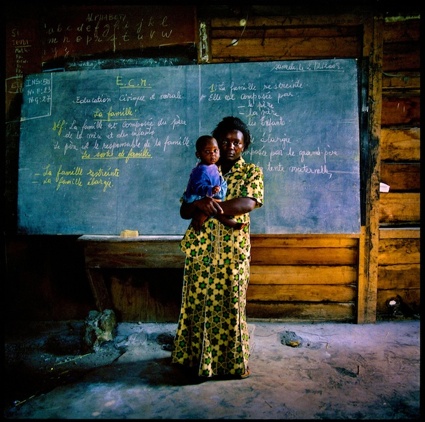
The blackboard behind 16-year-old Leonce reads: ‘The family is composed of the father, the mother and the children. The father is responsible for the family.’ Leonce is holding the baby she gave birth to as a result of rape.
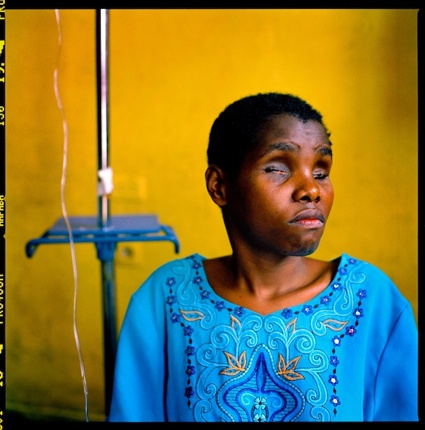
Basamae Maombi recognized one of the men raping her. She called out his name and begged him to stop. He reacted by holding her down, pulled out his dirty knife and gouged out both of her eyes.
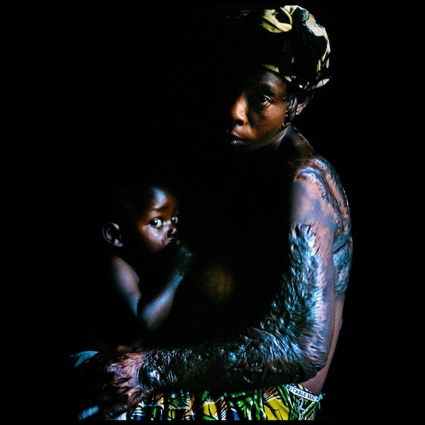
Maombi Elizabeth was raped by three armed men. Her 4-year-old child stood witness to the entire attack. As the men left the tent they set the canvas and grass construction alight. Neighbours ran to save the occupants. Elizabeth survived. Her daughter did not. Elizabeth is now covered in the scars from 3rd degree burns.
Greg Constantine‘s series, Kenya’s Nubians: Then and Now documents the excluded Nubian community in Kenya.
The Nubian community has lived in Kenya for over 100 years. Brought to Kenya by the British in the late 1800s, Nubians served for the British during WWI and WWII and were vital in the development of East Africa. Unable to return to their homeland, they were assigned over 4000 acres of land by the British to settle on. The Nubians named the land, which is located outside of what would become Nairobi, Kibra. After Kenyan Independence in 1963, the Nubian community has been denied recognition, excluded from Kenyan society and any claim to the land of Kibra has been denied. Over the past 40 years, hundreds of thousands of rural migrants have flooded into Nairobi in search of work and Kibra has been the land where they’ve been encouraged to settle.
Eventually the Nubian settlement of Kibra would turn into Kibera, one of the largest slums in Africa.
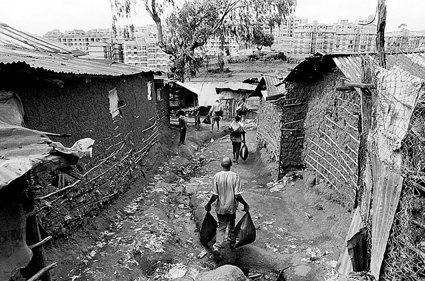 Nubians view Kibera as the homeland for the Nubian community in Kenya. Because many Nubians cannot find jobs outside of Kibera, some Nubian youth collect garbage to not only earn extra money but also to try to help keep the Nubian sections of Kibera clean. People buy the garbage bags and every Saturday, Nubian youth collect and remove them. /UNHCR/ G. Constantine
Nubians view Kibera as the homeland for the Nubian community in Kenya. Because many Nubians cannot find jobs outside of Kibera, some Nubian youth collect garbage to not only earn extra money but also to try to help keep the Nubian sections of Kibera clean. People buy the garbage bags and every Saturday, Nubian youth collect and remove them. /UNHCR/ G. Constantine
Robin Hammond had a second photo essay shortlisted. The Price of Gold follows the men who have fled violence in Zimbabwe to become gold miner in Mozambique.
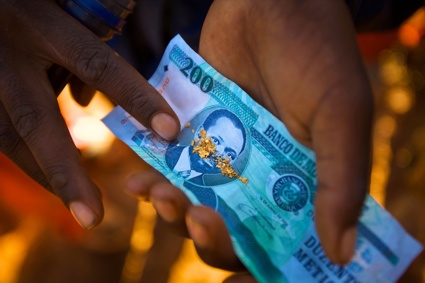 A miner holds a two hundred Metical bank note (about £3.48 GBP) containing a few grains of gold dug from a small scale gold mine
A miner holds a two hundred Metical bank note (about £3.48 GBP) containing a few grains of gold dug from a small scale gold mine
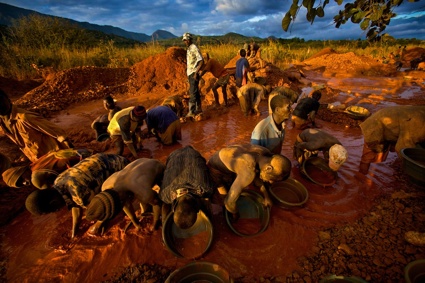 Men pan for gold in a small scale mine
Men pan for gold in a small scale mine
Zimbabwe has one of the lowest life expectancies in the world, the discovery of gold can literally save lives. But the search destroys lives too. The diggers handle toxic mercury to extract gold from the red earth. They risk suffocation at the bottom of fragile mine shafts that collapse burying occupants all too often. A few will find enough gold to change their lives, but most will not. Many will become ill and some will pay the ultimate price in their search for gold.
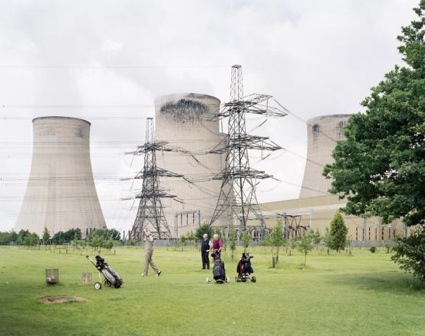 Ratcliffe-on-Soar Power Station, Nottinghamshire, 2008
Ratcliffe-on-Soar Power Station, Nottinghamshire, 2008
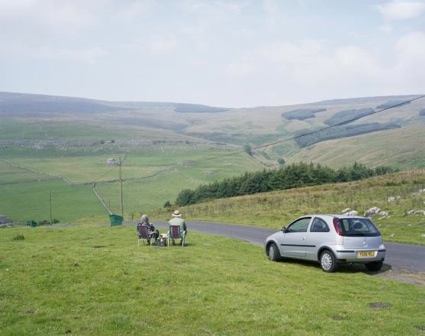 Fountains Fell, Yorkshire Dales, 2008
Fountains Fell, Yorkshire Dales, 2008
The second exhibition i particularly enjoyed today is Simon Roberts – We English at Flowers, a gallery where i keep going again and again (their other ongoing show, at the same Kingsland Road address, Aesops Fables, is stunning.) The photographs are the result of a tour around England in motorhome to portray the English at leisure. Some will find a bit of Martin Parr’s love for the slightly absurd but there’s also a genuine tenderness and no trace of cultural satire. The focus is the English and the way they embrace their landscape, the beaches, the picnics in the park, the family visits to National monuments, etc.
Amnesty International Media Awards Winners 2011 is up until November 8 at Amnesty International UK‘s Human Rights Action Centre and Simon Roberts –
We English remains open through 19 November 2011 at Flowers galleries.
